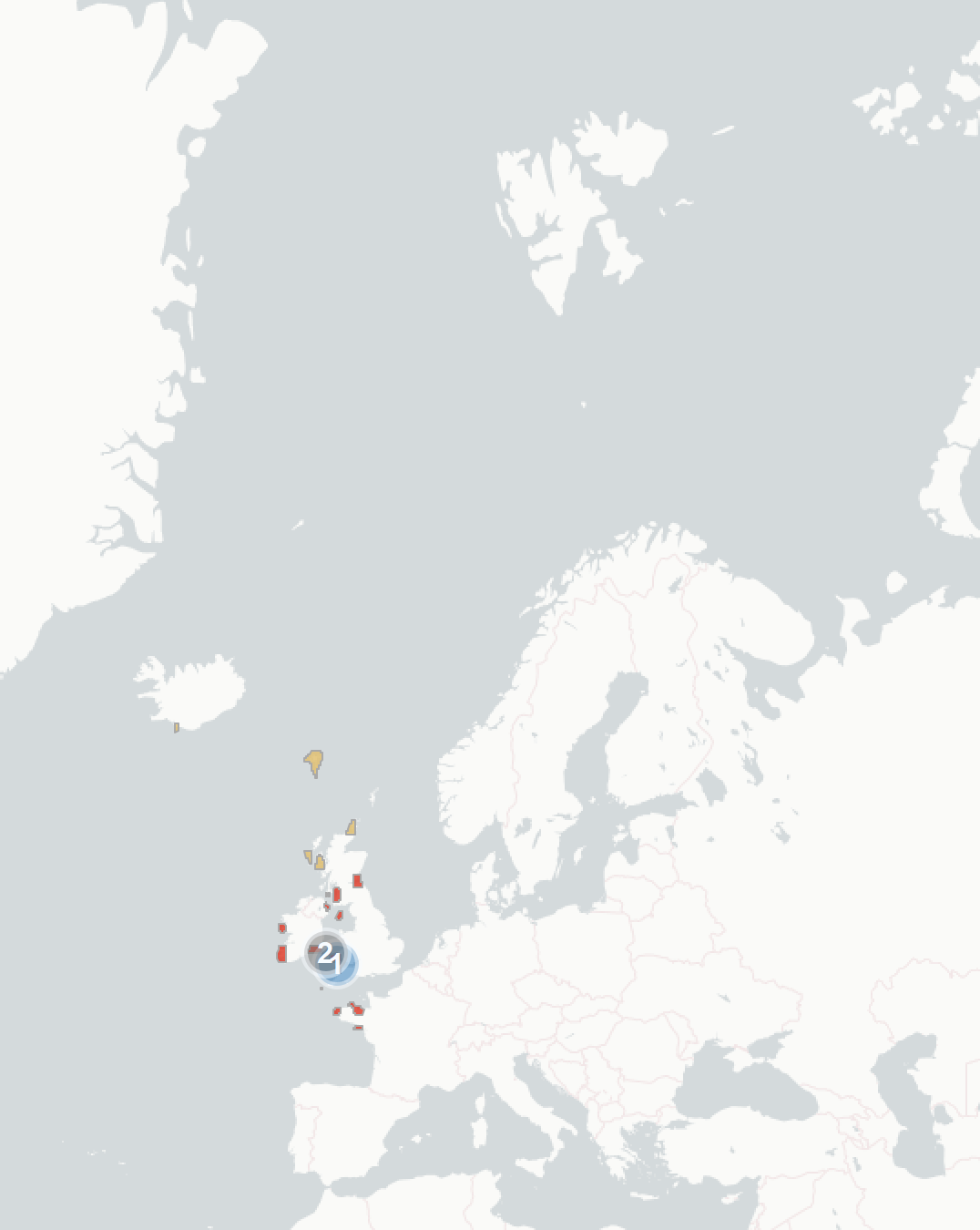Manx Shearwater (Puffinus puffinus): vulnerability to climate change
Evidence for exposure
Potential changes in breeding habitat suitability:
-
Current breeding area that is likely to become less suitable (66% of current range)
-
Current breeding area that is likely to remain suitable (34%)
-
Current breeding area that is likely to become more suitable (0%)
Current impacts to Manx Shearwaters attributed to climate change:
-
Negative Impact: Reduced prey availability during the breeding season has led to longer foraging trips and lower condition in adults and chicks
Predicted changes in key prey species:
-
Key prey species are likely to decline in abundance in the Irish Sea.
Climate change impacts outside of Europe
-
Manx shearwaters are known to be sensitive to climate change in the tropics, particularly to wrecks caused by storms, which are becoming more common due to changes in the El Nino cycle
Sensitivity
-
Manx shearwater burrows are prone to flooding, heavy rainfall during the incubation period can result in many nests being lost. Some populations may even be constrained by the number of nest sites that are prone to flooding. An increase in extreme precipitation events due to climate change is likely to have significant impacts on shearwater populations.
-
Manx Shearwaters, and shearwaters in general, rely on wind conditions to soar and use as little energy as possible. Changes in wind strength, direction and patterns could heavily impact energy use and migration paths.
-
This species has a long generation length (>10 years), which may slow recovery from severe impacts and increases population extinction risk
Adaptive capacity
-
Juveniles occasionally disperse to other colonies, but once breeding the species has very high fidelity. There is limited mixing between groups, leading to population divergence, and they are unlikely to disperse to or found new colonies.
-
However, the species has also colonised parts of North America in the last century, indicating the species can successfully found new colonies. Climate change is potentially a contributing factor to this shift in distribution.
